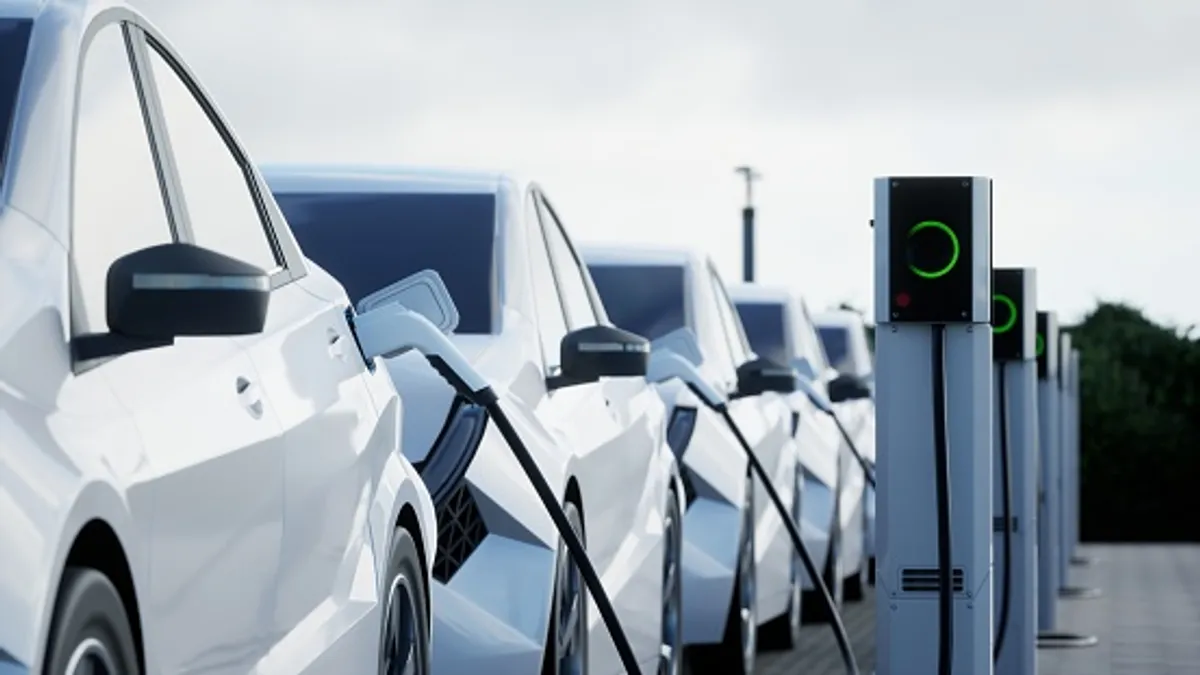Across the United States, utilities are facing unprecedented challenges as electricity consumption surges and the electrification of devices accelerates. These pressures are reshaping the energy landscape, requiring innovative solutions to help utilities meet four critical challenges facing the power grid:
- Managing the complexity of fast-growing distributed energy resources (DERs) alongside intermittent renewable generation;
- Delivering real-time peak load reduction to ensure grid reliability amid increasing baseload requirements;
- Preventing asset overload from localized demand on specific grid assets; and
- Meeting heightened customer expectations for energy management.
However, with high capital costs and lengthy approval processes for infrastructure upgrades, many utilities find themselves pressed to find quick and cost-effective solutions to address these challenges. ChargeScape’s end-to-end vehicle-grid integration (VGI) platform has been custom-built to tackle these four critical issues. ChargeScape delivers innovative solutions through a unidirectional managed charging (V1G) and bidirectional managed charging (V2X) capable software platform, which unlocks sophisticated and cost-effective EV load shaping and peak load reduction for utilities.
What is ChargeScape and what does it offer utilities?
ChargeScape is a software platform that provides utilities with a single, direct connection to unlock EV load flexibility from some of the world’s largest automakers. Formed as a joint venture among investors BMW, Ford, Honda and Nissan, ChargeScape builds upon a decade of experience from the Open Vehicle-Grid Integration Platform (OVGIP). ChargeScape delivers multiple value streams to utilities, EV automotive original equipment manufacturers (OEMs), and their customers:
- Utilities: a secure, direct connection to OEM telematics, enabling visibility into all EV drivers within a service territory and delivering EV load management for customers wishing to participate in a commission-approved program;
- OEMs: higher EV sales resulting from lower total cost of ownership, as well as the opportunity to more deeply connect with their EV customers on vehicle and home energy management; and
- EV drivers: tangible savings on their at-home charging costs, with additional money earned by smart-charging their vehicles through their OEM’s mobile app.
Additionally, as the VGI solution backed by more OEMs than any other platform, ChargeScape is positioned to deliver unique benefits for power utilities, including:
- Reliability in data and load management via direct, reliable connections to OEM telematics platforms;
- Maximum customer enrollment through OEM-exclusive marketing channels such as in-dealership program enrollment at the point of EV purchase or lease;
- Customer centricity delivered directly via the OEM’s mobile app, which allows EV drivers to enroll in a managed charging program, set their charging preferences, and ensure all load management is aligned with OEM best practices to protect against battery degradation; and
- Long-term durability in the market due to a healthy capitalization from OEMs who are committed to VGI for the long run.
ChargeScape’s unique advantages enable utilities to manage the broadest possible range of EV assets across their service territories and build a stronger, more resilient grid for the long term.
How does ChargeScape help utilities address the four modern challenges facing the power grid?
1. Managing the complexity of fast-growing distributed energy resources (DERs) alongside intermittent renewable generation
Rising adoption of rooftop solar, battery storage, and EVs as distributed energy resources (DERs), combined the additional complexities posed by intermittent renewable generation, means that utilities must now constantly manage bidirectional energy flows and continue to protect an ever-changing balance of electricity supply and demand across the grid.
EVs are a particularly complex DER in that they are mobile and, often, do not require the customer to obtain a special registration, interconnection, or tariff with their utility. Utilities therefore struggle to estimate how many EVs are in their service territory, where and when they are charging, and how much load flexibility they could provide at the system and asset levels. ChargeScape’s unique partnership with OEMs provides utilities with direct access to aggregated EV data, for all EVs belonging to its OEMs within a service territory, not just those enrolled in managed charging programs. This comprehensive visibility into EV charging data includes charging patterns, charge duration, and driver preferences, and allows utilities to optimize grid operations and make data-driven decisions in the design of their managed charging programs.
2. Delivering real-time peak load management to ensure grid reliability amid increasing baseload requirements
Increased energy demand from data centers has added to utilities’ baseload power requirements, and extreme weather events have further exacerbated seasonal spikes in energy consumption. EVs need not further add to this peak load, and ChargeScape enables utilities to reduce peak load at the bulk system level by enabling:
- Demand response (DR) that curtails 3-5 kW per participating vehicle; and
- Daily off-peak load shifting of up to 400 kWh per enrolled customer per year.
For more detailed case studies, please refer to the RMI Virtual Power Plant Flipbook.
Beyond V1G load management, ChargeScape also unlocks vehicle-to-everything (V2X) capabilities for utilities. Our OEM partners with V2X capabilities are already offering backup home power solutions in market today, enhancing resiliency for both customers and utilities. Across the U.S., thousands of bidirectional systems are in operation, with many located in California, where resiliency is a pressing concern. ChargeScape is in the process of launching vehicle-to-home (V2H) as well as vehicle-to-grid (V2G) programs from coast to coast, building a true virtual power plant of batteries that can export power back to the bulk system level when needed.
3. Preventing asset overloading from localized demand on specific grid assets
While peak load management at the system level is a critical component of grid reliability, it is also important for utilities to consider demand-side management at the asset level. To date, EV adoption in the US has largely been clustered around specific locations on the distribution network. This trend, together with the correlated adoption of solar and other elements of home electrification, has placed additional constraints on specific distribution assets, such as substations, transformers, and feeders. Utilities are increasingly seeking solutions that provide geolocational precision for peak load management.
ChargeScape’s Electric Vehicle Asset Integration (EVAI™) platform solves this problem by optimizing EV charging to protect distribution assets, defer infrastructure upgrades, and inform grid planning decisions. EVAI™ provides power utilities with:
- Load balancing: reducing load peaks generated by electric vehicles within a specific geocluster, e.g. a group of EVs charging on a specific transformer;
- Asset protection: prolonging the lifespan of transformers and feeders by integrating baseload signals in geo-specific EV load management; and
- Predictability: reducing peak persistent power by integrating EV charging demand into the peaks and troughs of an asset’s load curve.
For example, ChargeScape’s ongoing work with DTE Energy demonstrated peak load reductions of up to 27%, which was achieved through individualized EV schedules optimized to their respective grid assets. The graphs below illustrate ChargeScape’s asset specific EV charge optimization.

4. Meeting heightened customer expectations for energy management
Electrification has provided utilities with a once-in-a-century opportunity to re-engage with their customers through initiatives such as energy management and efficiency. Utilities are currently expanding the role they play with their customers to include concepts of autonomy, mobility, and financial freedom. Leaving home each morning with an EV battery that was charged at the lowest possible price – sometimes even generating income from V2G export – is quickly becoming an expectation among customers that utilities will need to meet.
ChargeScape enables utilities to step up to meet rising customer expectations with a “behind the scenes” software layer that allows customers to enroll in a managed charging (or grid export) program, set their EV charging preferences, and track their savings all through their automaker’s existing mobile app. The high levels of customer engagement and satisfaction in ChargeScape’s utility managed charging programs comes as no surprise:
- Customer enrollment rates above 25% through OEM-led channels;
- Opt-out rates as low as 1% for demand response events;
- Customer satisfaction with our managed charging programs above 80%.
By offering a unified enrollment and participation pathway for both V1G and V2X programs, ChargeScape puts customers in control of their energy management and maximizes their earnings.
Ready to transform EV load management with ChargeScape?
ChargeScape’s direct OEM integrations, sophisticated load management capabilities, and customer-friendly platform architecture put utilities back in control of DER management. With long-term capitalization from automakers, we’ve become a trusted partner to over a dozen power utilities across North America as they seek to overcome modern load management challenges. To learn more about ChargeScape and our offerings, please reach out directly to [email protected].










